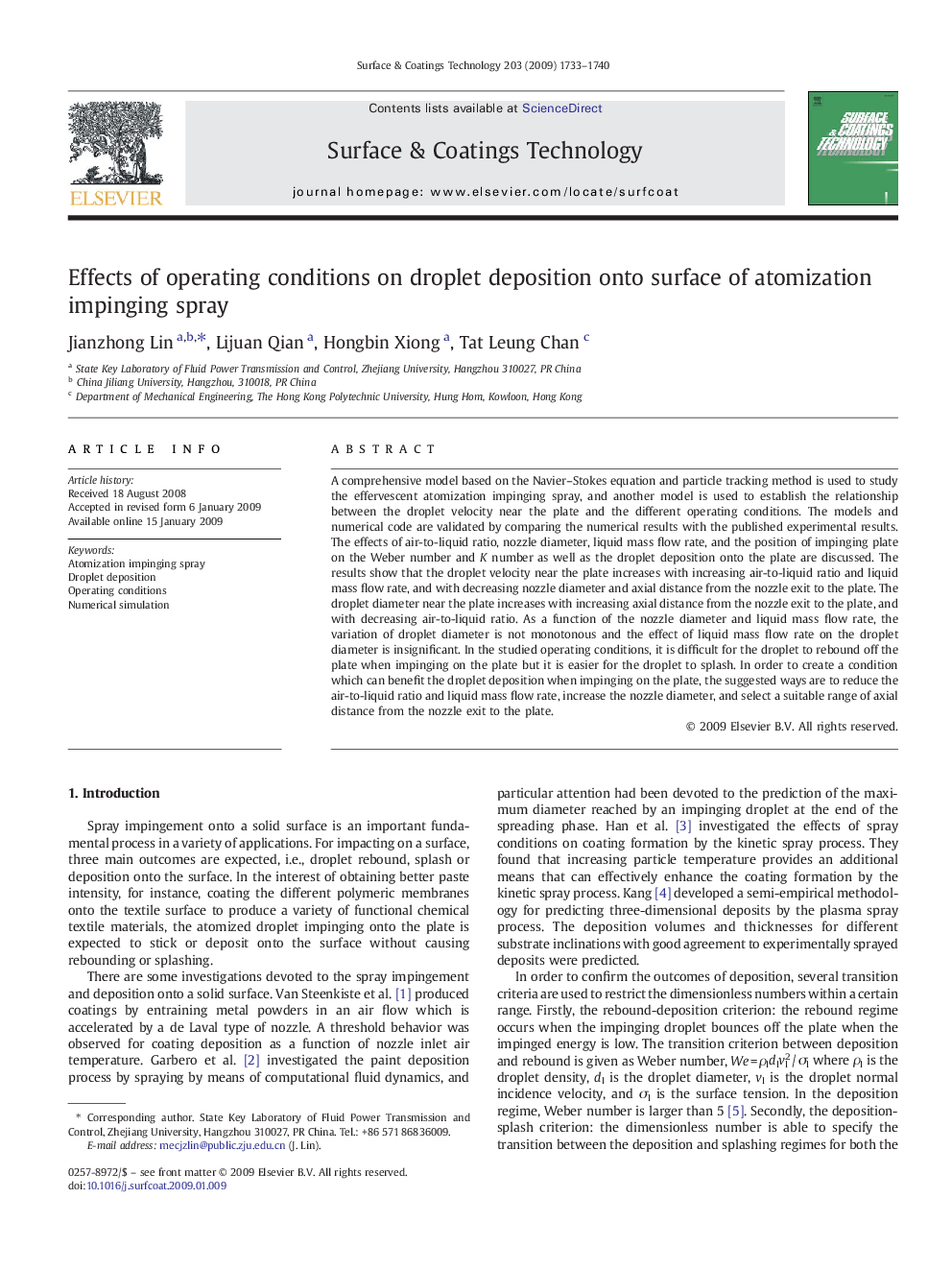| Article ID | Journal | Published Year | Pages | File Type |
|---|---|---|---|---|
| 1660758 | Surface and Coatings Technology | 2009 | 8 Pages |
A comprehensive model based on the Navier–Stokes equation and particle tracking method is used to study the effervescent atomization impinging spray, and another model is used to establish the relationship between the droplet velocity near the plate and the different operating conditions. The models and numerical code are validated by comparing the numerical results with the published experimental results. The effects of air-to-liquid ratio, nozzle diameter, liquid mass flow rate, and the position of impinging plate on the Weber number and K number as well as the droplet deposition onto the plate are discussed. The results show that the droplet velocity near the plate increases with increasing air-to-liquid ratio and liquid mass flow rate, and with decreasing nozzle diameter and axial distance from the nozzle exit to the plate. The droplet diameter near the plate increases with increasing axial distance from the nozzle exit to the plate, and with decreasing air-to-liquid ratio. As a function of the nozzle diameter and liquid mass flow rate, the variation of droplet diameter is not monotonous and the effect of liquid mass flow rate on the droplet diameter is insignificant. In the studied operating conditions, it is difficult for the droplet to rebound off the plate when impinging on the plate but it is easier for the droplet to splash. In order to create a condition which can benefit the droplet deposition when impinging on the plate, the suggested ways are to reduce the air-to-liquid ratio and liquid mass flow rate, increase the nozzle diameter, and select a suitable range of axial distance from the nozzle exit to the plate.
